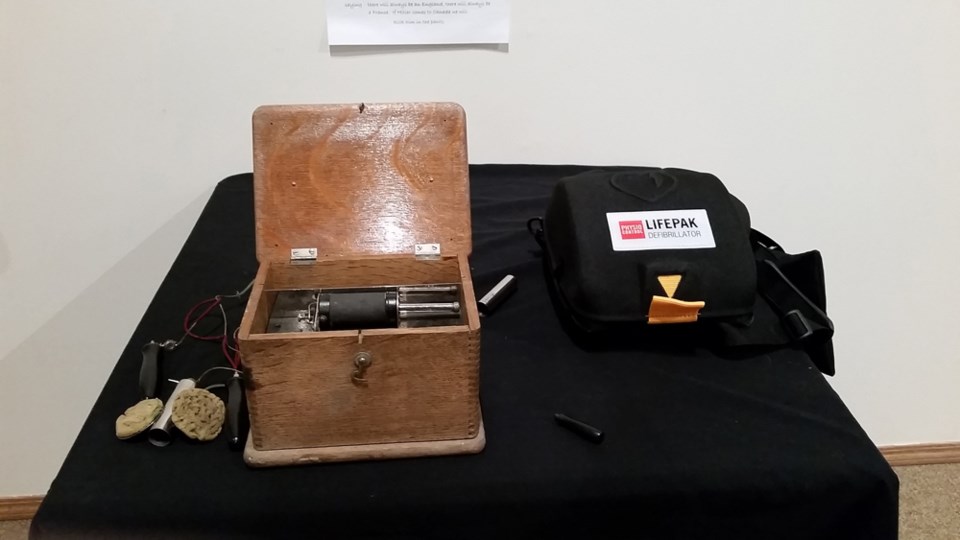It is July and Summer Sizzler.
Someone collapses and needs a defibrillator.
The new automated external defibrillator in the Museum and Gallery lobbies could save their life.
Humboldt and District Museum and Gallery Director, Jennifer Hoesgen, says that besides having them available to the public, all of her staff are trained on how to use them.
“Staff are in the buildings Mondays to Saturdays all year round from 8:30 to 5 and then Sundays in the summer as well. If people need them, they’re there for them.”
There are instructions on the machine but Christine Stumborg with the Humboldt District Museum and Gallery says that someone could do real damage if they do not know how to use it.
If there is assistance, they are there if they are needed, says Hoesgen.
This arrival coincides with another arrival at the Museum; a turn of the century defibrillator.
Garry Jenkins was making a garbage run for the Humboldt Good Neighbour Store when he found the wooden box. He could tell by looking at it that it was from the late 1800s.
After a year and some minor repairs, he and his wife started looking into what it actually was.
“We punched a few names that were on it and it came up as a device used by doctors or quacks.”
Based on the research by museum staff, similar models were developed between 1870-1896.
Electric shock was used in all sorts of medical treatments, from shocking areas of back pain, to heart problems, to mental illness “cures”.
The Humboldt and District Museum is looking for anyone with more information on the find, especially the person who gave it to the Good Neighbour Store.
“We’d like to know more of the history on it,” says Stumborg. “If anyone dropped it off, we’d like to know more information if they can come in and let us know if it was locally used.”
It would have more significance to the Humboldt collection if it was locally used, says Hoesgen.
Jenkins says he made the trip between a year and a half to two years ago.




